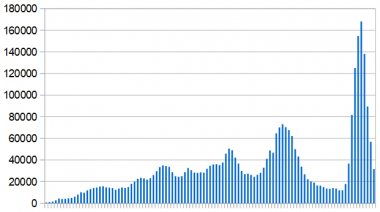Publishing an independent newspaper is a hazardous business in countries where there is no tradition of a free press and where the authorities are not accustomed to having their actions questioned in print. Founded in 1991, the Yemen Times broke new ground in Yemeni journalism and won several international awards for its reporting. The authorities, though, were unsure how to deal with it and during its 24-year existence attempts to coopt the paper’s editor were interspersed with harassment, threats, arrest and prosecution.
* * *
YEARS of armed conflict in Yemen have made it easy to forget there was a brief moment, three decades ago, which raised hopes for a better future. In 1990, amid much public excitement, Yemen declared itself a democracy. Within months more than 40 political parties had sprung up, along with dozens of new newspapers and magazines.
Among those who embraced this opportunity was Abdulaziz al-Saqqaf, a professor of economics at Sana’a university. With the aid of two assistants and a couple of tiny Macintosh computers, he launched a 12-page weekly called the Yemen Times. He wanted it to be an independent voice that would monitor the government’s performance and nudge politics in what he saw as a positive direction, especially where democratic practices and human rights were concerned.
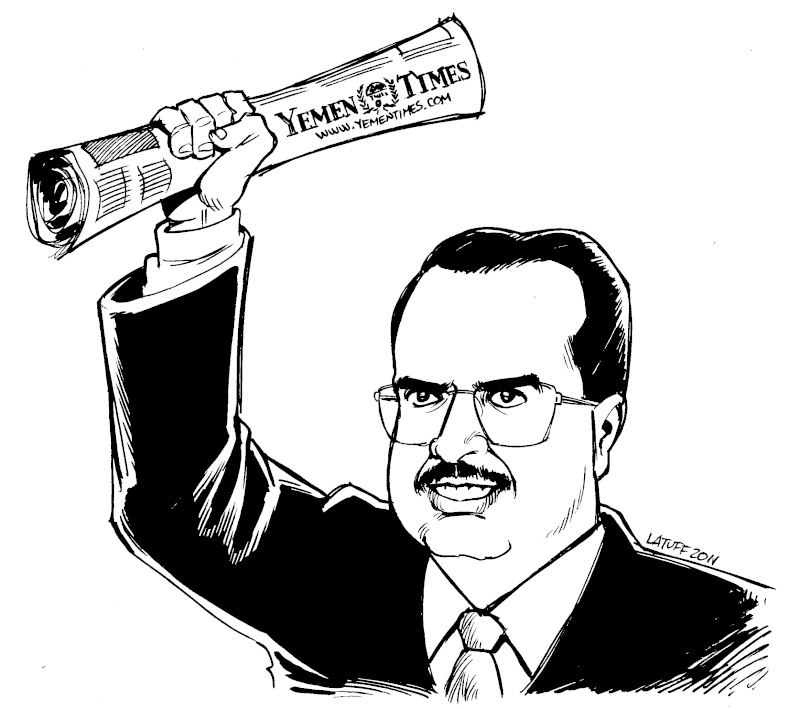
Saqqaf registered his newspaper with the Information Ministry, as required by law, and was granted Licence Number 9 — which pleased him because the first eight licences had all gone to publications owned by the government or political parties.
Despite having limited resources and being published in English (in a country where millions were unable to read or write, even in Arabic), the Yemen Times soon acquired a significance far beyond its size. It became essential reading among educated Yemenis and foreign residents — including the diplomatic community. That, in turn, made it attractive to advertisers.
The authorities were wary, though. While they could cite the paper’s existence as a sign that free speech was alive and well in Yemen, they were not accustomed to independent initiatives outside their control. The result was a carrot-and-stick approach where attempts to coopt Saqqaf into the president’s political party were interspersed with harassment, threats, arrest and prosecution.
Considering this precarious existence it’s little short of a miracle that printing of the Yemen Times continued for 24 years. The story of its battles with authority is a long one but far from unique: in many ways it’s typical of the tribulations faced by journalists who seek to report freely in countries where the rules are uncertain and the consequences of breaking them can be dire.
Irreconcilable differences
In its early stages the new era of pluralism and democracy that arrived in Yemen in 1990 bore some resemblance to the political spring in parts of eastern Europe after the fall of communism but its foundations were shaky. It came about almost by accident as a quick fix for an intractable problem — as a way of glossing-over irreconcilable differences in the hope that competitive elections would magically resolve them.
Britain’s withdrawal from Aden in 1967 had left Yemen divided into two states. The southern part, known as the People’s Democratic Republic of Yemen (PDRY), became the first — and only — Marxist Arab state. In the north, the Yemen Arab Republic (YAR) was more traditional and more tribal. Following the collapse of the Ottoman empire it had been ruled by imams (religious leaders with monarchical powers) until revolution turned it into a republic.
The north-south division was a product of foreign imperialism and many Yemenis aspired towards national unity. Talks about a merger had taken place sporadically since the 1970s but a crucial sticking point was how the unified state would be governed. The original intention was to create a “unified political organisation” — in effect, a one-party state — but that idea was eventually set aside amid disagreements about the proposed organisation’s ideological character.
Instead, it was agreed that in order to unify the two states the Yemen Socialist Party (YSP) which ruled in the south and the northern General People’s Congress (GPC) would join forces in a coalition government while retaining their separate identities for the time being. That decision, motivated more by force of circumstance than deliberate intent, advanced the development of pluralism in Yemen but simultaneously planted the seeds of conflict.
The life of the new Yemeni state began in May 1990 with a “transitional period” to draft a new constitution and prepare for multi-party elections. In the meantime, the northern and southern parliaments were merged. A presidential council was established, headed by the northern leader, Ali Abdullah Saleh, with Ali Salim al-Baid, secretary-general of the southern YSP as his deputy. Similarly, government ministers from the north were assigned a southern deputy, and vice versa.
Unfamiliar territory
One effect of this was that publishers as well as politicians found themselves in unfamiliar territory and Saqqaf, like everyone else, was feeling his way. Though the promises of democracy were something of a mirage, Saqqaf wanted the Yemen Times to be constructive as well as critical. In terms of criticism he was hoping not to cross any red lines but could only guess at where the red lines might be.
When the paper launched in 1991, Yemen was in the midst of a crisis resulting from Saddam Hussein’s invasion of Kuwait. It had long-standing ties with Iraq but also depended on remittances from Yemeni workers in Saudi Arabia and the other Gulf states opposing Iraq. Opting for what it saw as a middle course, Yemen simultaneously condemned the invasion of Kuwait and opposed western military intervention, arguing instead for a regional — Arab — solution. In this it differed little from several other “neutral’’ Arab states, but as the only Arab member of the UN Security Council at the time, Yemen was in a uniquely exposed position. When it voted against authorising the use of force to recapture Kuwait the US retaliated by cutting off aid and neighbouring Saudi Arabia abruptly expelled some 750,000 Yemeni residents.
This amounted to double punishment of Yemen: a sudden loss of remittances from expatriate workers in Saudi coupled with the problem of absorbing this huge influx of returnees. In the space of three months, Yemen experienced a 7% increase in its population, severely exacerbating unemployment.
The first issue of the Yemen Times appeared on February 27, as the last Iraqi forces were being driven out of Kuwait by the US-led coalition. There were obvious questions to be asked about what Yemen had achieved by its stance but Saqqaf opted for safety with a front-page summary of an interview Saleh had given to an Egyptian leftist magazine defending his position.

There was a hint of criticism, though, in the picture accompanying the article: an old photo of the president at a time when he had longish hair. For those in the know, this alluded to an incident in 1978 when Saleh, newly installed as president of northern Yemen, met Saddam at an Arab summit in Baghdad. Saddam took a liking to him but was unimpressed by his appearance. According to the story, Saddam summoned his personal barber to cut Saleh’s hair. After also equipping him with a new suit made by Saddam’s personal tailor the Iraqi leader declared himself satisfied with the makeover and he allegedly told Saleh: “Now you look presidential.”
The intended message of the uncut hair in the photo was that Saleh should be his own man and not allow himself to be pushed around by others, though it was probably too subtle for the president or many of the paper’s readers to notice.
First reactions
Reactions to the first issue of the Yemen Times were generally positive and the paper soon found ministers, politicians and officials eager to be interviewed. The exception was Saleh himself who ignored Saqqaf’s requests, even after the king of Jordan had given an interview. It gradually became clear to Saqqaf that Saleh was holding back in the hope of coopting him: he kept getting hints that once he joined the president’s party the Yemen Times would receive funding, Saqqaf would get a senior government position and Saleh would not only grant him an interview but give him a series of exclusive stories too.
That, though, wasn’t what Saqqaf was looking for. He wanted the paper to be an independent voice, and while it would be foolish to criticise the president directly, there was still scope for questioning the activities of his subordinates. Saleh allowed himself to be surrounded by corrupt officials — hangers-on who Saqqaf regarded as parasites using their positions for personal enrichment rather than the benefit of the country. Focusing on them was less likely to arouse Saleh’s ire but there were still risks, as Saqqaf soon discovered.
Arriving for work one day, he found a group of armed tribesmen outside the office complaining that the Yemen Times had said “bad things” about the governor of Shabwa province. The paper had reported complaints that the governor was extorting money from local oil-related businesses. “You are all welcome,” Saqqaf told the tribesmen, “but your weapons are not. We have a no-guns policy in the office.” One of them replied that a tribesman never goes anywhere without his weapon but eventually they relented.
The leader of the group turned out to be the governor’s son and Saqqaf offered to interview him, expressing delight at having found someone to explain the governor’s side of the story. At this, the man backed off, saying he didn’t want anything more to be published.
Not surprisingly, nervous printers and office landlords were also a frequent problem. On one occasion, when Saqqaf was out of town, the paper’s landlord invited the staff to an expensive lunch. It seemed like a nice gesture but, on returning to their office the staff found themselves evicted: the locks had been changed while they were eating.
Quarrels over power-sharing
Power-sharing between the GPC and YSP had been the key to merging the northern and southern Yemeni states but as time went on it became more difficult to maintain. Attempts to present it as an equal partnership were doomed to fail — not least because the north’s population out-numbered the south by four to one.
Following unification, the existing northern and southern parliaments had been merged to create a new House of Representatives with 159 members from the old northern parliament and 111 from the south (plus 31 appointees). This meant the south was initially over-represented but by the time of the first multi-party elections in 1993 the boundaries of electoral districts had been revised to give them roughly equal numbers of voters. Based on the demographics, the YSP was bound to lose a large number of seats unless it could make significant inroads among the northern electorate, and its prospects were further damaged by the emergence of the Islamist/traditionalist Islah party as a third political force.
The task of choosing the new parliament was not entirely entrusted to the voters, though. In some instances rival parties negotiated for seats amongst themselves, scaling-down their campaigns to let the agreed candidate win. Saqqaf experienced this first-hand when he put himself forward as an independent candidate in Yemen’s second city, Ta’izz. A neighbour who was a sitting member of parliament for the GPC informed him that the seat had already been promised to the YSP but suggested he could salvage the situation by allying himself with the GPC. When he declined and persisted as an independent the GPC made a point of sabotaging his campaign and the YSP candidate won, as previously arranged.
The overall outcome was that the GPC won 123 of the 301 seats and the YSP slipped into third place with 56 seats — behind the Islah party which won 62. Five smaller parties won 12 seats and independents, most of whom subsequently joined the GPC, won 47.
However, the geographical distribution of seats among the parties showed that three years after unification the north-south divide was as strong as ever. In the northern provinces the YSP won only 15 out of 243 seats, while in the south the GPC won only three out of 56 and Islah won none.
At that point the interests of democracy might have been best served by the YSP accepting its defeat and becoming an opposition party but instead it joined a three-way coalition with the GPC and Islah which very quickly proved unworkable.
The road to war
Exacerbating the political quarrels was the fact that the armed forces of north and south had not been merged as part of the unification process. Instead, both sides had stationed some of their troops on the other side’s territory: the southerners had stationed five brigades in the north and the northerners had placed three in the south. This was intended as a confidence-building measure but in the heightened tension of the political crisis it merely increased the risk of conflict, creating flashpoints where each side was perceived as threatening the other while at the same time believing itself to be under threat. On April 27, 1994 — the first anniversary of the parliamentary election — a tank battle erupted at Amran in the north, where the southern Third Armoured Brigade and the northern First Armoured Brigade shared a camp. It lasted several days and ended with the southern brigade being wiped out.
The war began in earnest on the night of May 4–5 when aircraft under YSP command attacked northern airports at Sana’a, Ta’izz and Hudaydah, the presidential palace in Sana’a, the country’s two main power stations, Hudaydah port, and oil storage and pipeline facilities at Ma’rib.
A couple of weeks later southern leaders proclaimed the creation of the “Democratic Republic of Yemen” — in effect declaring secession — but by that stage northern forces, aided by Islamist fighters, were gaining the upper hand. Nine weeks after the war began it ended with southern leaders fleeing and with Salih tightening his grip on a country which was now unified by force.
Accused of ‘dubious practices’
The Yemen Times continued publishing throughout the war, though it faced distribution problems and staff had to eat and sleep in the office. One important activity was checking the official statements against evidence from other sources, and reporters often found casualty figures to be higher than those claimed by the government. On one occasion, after the government claimed to have shot down a southern warplane, the paper sought to photograph the wreckage but could find no sign of a crash at the location where the government said it had happened.
Saleh accused the Yemen Times and the southern-based al-Ayyam newspaper of “dubious practices” in their war coverage. For now, he said, he was just giving them a warning but would “take the appropriate measures at the appropriate time”. By this stage, though, the paper was gaining international recognition — which may have been the reason for Saleh’s apparent restraint. In the spring of 1995 Saqqaf was invited to Washington to receive the National Press Club’s press freedom award.
Publishing in English gave the Yemen Times some protection from harassment by the authorities, since many government officials were unable to read it. Staff at the Information Ministry and National Security translated its content into Arabic and President Saleh received summaries. By the time the translations arrived, though, the officials had usually turned their attention to something else, but the possibility of translation errors by government officials brought a new hazard. On one occasion the paper was prosecuted for allegedly mis-quoting Saleh but the case collapsed when the mis-quote turned out to be an error in the Information Ministry’s translation of what the paper had printed.
A beating in the cells
Shortly after the 1994 war, the Yemen Times organised a media symposium to discuss the country’s future. Some 40 journalists had been invited but those from the GPC and Islah media failed to turn up despite having accepted the invitation. Part of the discussion focused on the nature of the postwar goverment. Some argued that a broad-based coalition would help with reconciliation but most feared this would impede the country’s democratic development because of the lack of a meaningful opposition.
Pleased by the discussion at the meeting, Saqqaf returned to his office to write about it for the paper but later that evening members of the government’s Political Security Organisation turned up at his home and dragged him away in an unmarked SUV. After spending some hours in a tiny underground cell he was handcuffed and blindfolded, then kicked and beaten with rifle butts.
Around 10pm the following night, he was blindfolded again and led out to a vehicle. His guards told him he was being handed over to a different team and after a 20-minute drive he was bundled out and told to sit the ground, with his blindfold still on, and wait for the new team to pick him up.
Nobody came and when he eventually dared to peak through the blindfold he found himself sitting in a field on the outskirts of Sana’a. Unsure whether he had been released or was still a fugitive, Saqqaf made his way into the city and checked into a hotel where he knew two visiting Iraqi academics, Dr Siyamend Othman and Dr Abdul-Hussain Aziz, were staying. As a precaution, Dr Othman offered to swap rooms with Saqqaf while Dr Aziz, who was then in the adjoining room, advised Saqqaf to knock on the wall if there were “any developments” during the night.
It turned out that more than 20 people had been arrested and tortured at the same time as Saqqaf, including almost everyone who attended the symposium, and the Yemen Times office had been ransacked. Staff in the president’s office insisted Saleh had not known about the arrests and had ordered the detainees to be released as soon as he found out.
One outcome of this was that after years seeking an interview with Saleh, Saqqaf found himself summoned to the presidential palace for the first time. Saleh enquired about Saqqaf’s health and his family, expressed regret over what had happened and, after a short conversation about the war, sent him on his way saying “We need patriotic people like you to help us rebuild Yemen.”
Saleh’s efforts to manipulate people could be crude or subtle and, in Saqqaf’s view, he had a knack for spotting a person’s weak points. Saqqaf later recalled how he was once summoned to the presidential office and, suspecting he was about to be offered a bribe, told Saleh: “Mr President, if you’re going to offer me money or a job, I won’t take it” — to which Saleh replied: “Actually I wasn’t intending to offer you either.”
Instead, Saleh made a threat that Saqqaf found especially chilling, telling him that he was thinking of starting his own English-language newspaper. A competitor for the Yemen Times later materialised in the form of the Yemen Observer, founded by Faris Sanabani, who happened to be the president’s press secretary. This was seen as an example of “cloning”, a familiar technique in Arab countries where the authorities seek to stifle independent initiatives by setting up a similar organisation under their control.
Although repeated attempts to recruit Saqqaf into the president’s political party had failed, in 1996 he was surprised to find himself listed as a member of Yemen’s Consultative Council, a newly-created body dubbed as the “upper house” of parliament. Saqqaf had not been consulted about his appointment and had no illusions about the nature of the council, since the president seemed to treat it as a dumping ground for troublesome individuals. Nevertheless, Saqqaf accepted the post, and persuaded the council to set up a human rights committee – which he chaired. He had some success in securing the release of people who had been wrongfully imprisoned but he eventually resigned in frustration.
Under surveillance
Saleh’s military victory over the south eliminated most of the factors that had earlier pushed the country towards pluralism and democracy. The framework remained in place but was not being consolidated by practice and the political space was increasingly monopolised by the GPC.
As Saqqaf and others sought to preserve the earlier gains their activities were monitored by the Political Security Organisation (PSO), a body with no clear mandate and dubious legal status, which sent its agents — known in Yemen as “mosquitos” — to attend conferences and other events. Though supposedly operating under cover, they were easily spotted because they always sat at the back of the room so as to observe the audience as well as the speakers.
Saqqaf and others doubted the accuracy of the reports the PSO’s spies were sending to their masters and began engaging with them. The agents were clearly unfamiliar with the new type of political discourse and struggling to work out if “democracy” was a “good” word or a “bad” word: it appeared to be good when used by government supporters but bad when used by their suspected opponents. One agent even sought guidance from Saqqaf about a talk given by an economics professor: “If it was good, I need not mention it in my report.”
In a speech to mark the second anniversary of the north’s conquest of the south, Saleh pointedly accused Saqqaf and the Yemen Times of acting against the country’s best interests. Saqqaf was unsure why, but he suspected it was because the paper had published an anecdote recalling how a former president, Ibrahim al-Hamdi (assassinated in 1977), had taken a public stand against corruption. The story was that Hamdi had visited a hospital and ordered one of his officials to give ten riyals to each patient. On checking later, Hamdi found the official had kept half the money for himself — and he was duly put on trial for theft. The unspoken message here was that Saleh should follow Hamdi’s example and, as a further dig at Saleh, the same issue of the Yemen Times included a full-page colour photo of Hamdi for readers to cut out and stick on their walls.
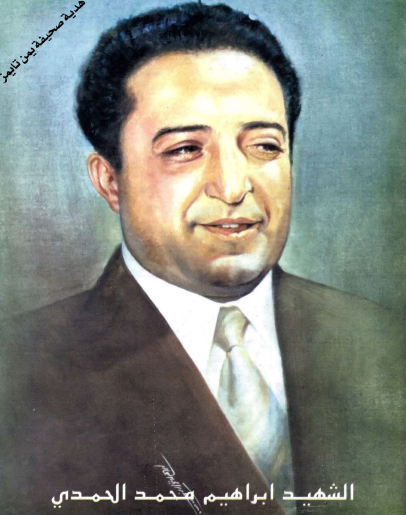
Newspapers on trial
Towards the end of 1998, the paper published a front-page story with a headline in gigantic type saying: “$22,500,000,000”. This, according to the paper’s calculations, was the amount Yemen had received in oil revenues and aid during the 20 years since Saleh came to power.
“A good part of the money was pocketed by crooked government officials and military/security officers working for the state,” the article said. “Also dipping into the bounty are tribal sheikhs and other civilians who are part of the entourage of our political leadership.”
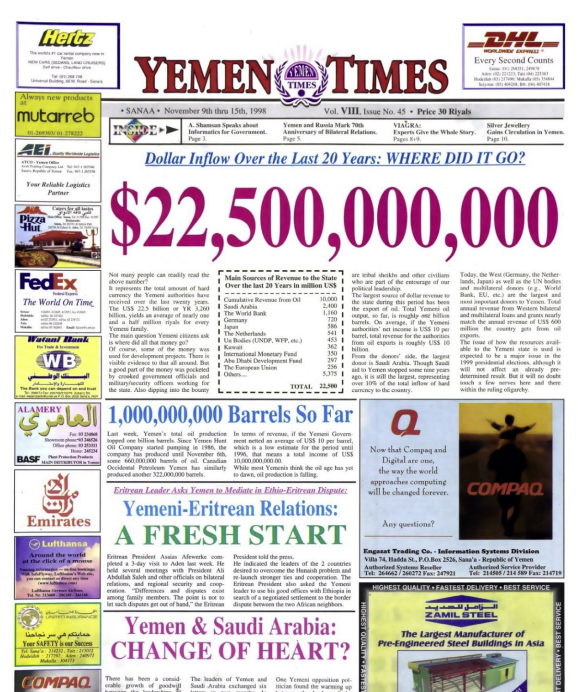
The article ended provocatively with a mention of the coming presidential election: “The issue of how the resources available to the Yemeni state is used is expected to be a major issue in the 1999 presidential elections, although it will not affect an already pre-determined result. But it will no doubt touch a few nerves here and there within the ruling oligarchy.”
Ahead of the election, seven non-government newspapers of various political complexions were put on trial — all in connection with things they had printed. One was in trouble for publishing “sensitive information”, another for allegedly inciting separatist feelings and the remaining five, including the Yemen Times, were accused of defamation.
The case against the Yemen Times focused on its “$22,500,000,000” story and its implication that much of the money had been misappropriated. According to the prosecutor, the paper was “engaging in politically motivated misinformation”: checks with the finance ministry and the government’s auditors had (unsurprisingly) failed to provide any evidence of corruption. On that basis, the prosecutor was demanding an official retraction from the Yemen Times, a two-year suspension of its publishing licence and a six-month suspended jail sentence for Saqqaf.
Hit by a car
The court never reached a verdict, however, because Saqqaf died tragically on June 2, 1999. He had organised a working lunch with four others at the Shaibani restaurant in Sana’a, mainly to discuss the Emerging Democracies Forum, a three-day conference due to be held in Yemen later that month. Sponsored by the US-based National Democratic Institute, it was billed as an opportunity “for nascent and promising democracies to share experiences, achievements, best practices as well as common hurdles of democratic transition”.
More than 200 delegates were invited from around the world, including official delegations from 16 “emerging” democracies, and president Saleh was due to address the opening session. Opposition parties viewed the conference as a stunt to polish-up Saleh’s image but Saqqaf was hoping to build on whatever momentum it might generate. One idea discussed at the lunch was to encourage Saleh along the democratic path by bombarding him with congratulatory messages after the event.
With lunch over, the group headed in separate directions and as Saqqaf crossed the road outside he was hit by a car and killed. He was only 47 and his family remain unconvinced that his death was an accident.
A detailed account of the Yemen Times’s struggles under Saqqaf’s editorship can be found in a book about his life: Abdulaziz: Making Yemen a Good World Citizen. It’s written in the first person, in the style of an autobiography, though the actual author is one of his sons, Raidan.
Saqqaf’s untimely death was not the end of the Yemen Times, however: other members of his family took charge and kept it running for a further 15 years.
A 26-year-old editor
At the time of his father’s tragic death, Walid al-Saqqaf was 26 and had no ambition to become a journalist, let alone an editor. He had, however, built the paper's website and was about to take up a Fulbright scholarship in the US, studying computer engineering. Those plans were quickly set aside in order to take charge of the Yemen Times. “My dreams of becoming an entrepreneur or software engineer in Silicon Valley were dashed overnight,” he said.
Faced with the authorities’ threat to suspend publication, Walid decided it was time to be less confrontational. “I wasn’t as charismatic or driven as my father, so I took a more subtle approach, focusing on the professional aspect of journalism rather than the advocacy aspect,” he said. “It was a matter of measuring risks, assessing what we could and could not do.”
He was also thinking long-term, looking for ways to sustain the paper’s finances and professionalise the staff. “One of the main problems we had was that our arm was always being twisted because we were using a printing press which belonged to someone else,” he said. The family raised a loan and invested more than $300,000 in a Heidelberg printing press together with related equipment. This eliminated the risk of publication being blocked by fearful third-party printers. “Every machine we needed was now in-house,” Walid said. “We were self-sufficient.” It also meant the Yemen Times could take on other printing work — which gave it a new revenue stream in addition to advertising and sales of the paper.
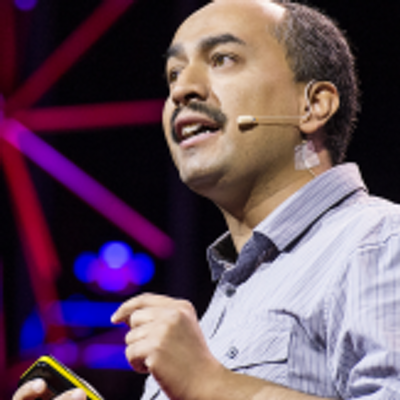
In a further development the Yemen Times began to expand beyond its original English-speaking audience with the launch in 2012 of a community radio station broadcasting in Arabic. This was the first independent station to be established after Yemen’s unification and others soon followed. “It was an interesting time,” Walid said, “because there were no laws or regulations for that.” The radio station had the same perspective as the newspaper though its tone was different, discussing everyday concerns of listeners such as electricity, water, safety, and women’s rights. Its aim was to bring ordinary citizens together with decision-makers and, in an unprecedented move, the mayor of Sana'a took part in several programmes answering live calls from listeners with grievances. There was also a follow-up system to check what was done about the complaints afterwards.
A sham election
The 1999 presidential election ought to have been a milestone in Yemen’s democratic development but it turned into a farce. Ali Abdullah Saleh had already held power in Sana’a for more than 20 years but had never been directly elected by the people. Following the 1994 war, parliament granted him another five-year term but amended the constitution to say that in future there must be a competitive election with at least two candidates.
Under the electoral rules, presidential nominees had to be approved by 31 members of parliament (10% of the total) but opposition nominees were unable to secure enough support. This resulted in a sham contest between Saleh and Najib Qahtan al-Sha’abi, an obscure member of his own party — which Saleh won handsomely with 96% of the votes. Sha’abi later complained that Saleh had reneged on a promise to pay his campaign expenses.
This was one example of the GPC’s growing dominance over Yemeni politics. Instead of the diverse multi-party system promised at the time of unification, the country was drifting back to the old one-party system — and one reason for that was a fragmented opposition. The YSP had boycotted the 1997 parliamentary elections, with the result that Saleh’s GPC won 187 out of 301 seats and Islah, its ally at the time, won 53. Of the 54 candidates elected as independents, 39 later switched to the GPC and nine to Islah. That left only a handful of seats that were not tied to the government.
In the subsequent 2003 elections the GPC further consolidated its position, winning 238 seats (mostly gains from independents). Islah came second with 46 seats and the YSP, which was not boycotting on this occasion, came third with just eight. The Yemen Times reported that while international observers were busy monitoring polls in the main cities, there were many “outrageous violations” in remote areas. It published a photo showing boys aged between seven and 15 queueing up to vote in Amran province.
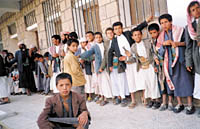
The GPC’s overwhelming dominance of parliament created an unhealthy situation for democracy in Yemen. “Instead of having a truly diverse multi-party system we re-established the old single party system,” Walid said. A counter-argument was that Saleh and his party now had a very clear mandate to press ahead with promised economic and political reforms — but hopes of that soon faded.
Attack on US warship
The biggest news event during Walid’s editorship came in October 2000 when Islamist militants attacked the USS Cole. The American guided-missile destroyer was refuelling in Aden harbour when a small dinghy with two men on board approached the ship and exploded, blowing a 40-foot hole in its side. Seventeen US sailors died and 39 more were injured. Subsequent investigations pointed strongly to an al-Qaeda connection.
The Yemen Times reported extensively on the aftermath of the attack, together with the subsequent investigation and trial. “We were trying to understand who might be behind this, and whether there were signs of international networks connected to this apart from al-Qaeda in Yemen,” Walid said. “We tried to inform the public using multi-level approaches and we wanted to make sure we were not seen as siding with anyone. We didn’t use the paper to appear more patriotic, for example, unlike other newspapers — it was more about professional journalism: what happened, what the evidence was, and the sources. That’s the approach we took.”
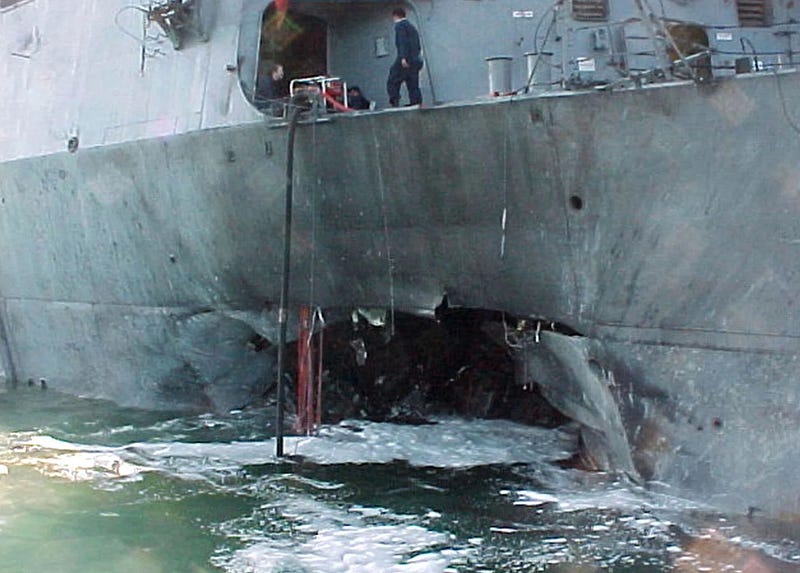
One result of the attack was that Yemen began attracting more international attention — as did the Yemen Times. “Many international correspondents used to contact us.” Walid said. “It was a way for us to be on the map. Not the best way, but one way.”
Saleh, meanwhile, was realising he could gain support from the US and other countries by making a show of fighting terrorism. However, he was careful not to wipe out al-Qaeda entirely, because the anti-terrorism support he was getting hinged on the threat continuing. This led to what Walid described as a “revolving door” policy on terrorism. “Whenever there was a need for Saleh to gain some support he would release a few al-Qaeda members so they could be recaptured … There were elements in Yemen that did not want this to end — it was useful for them.”
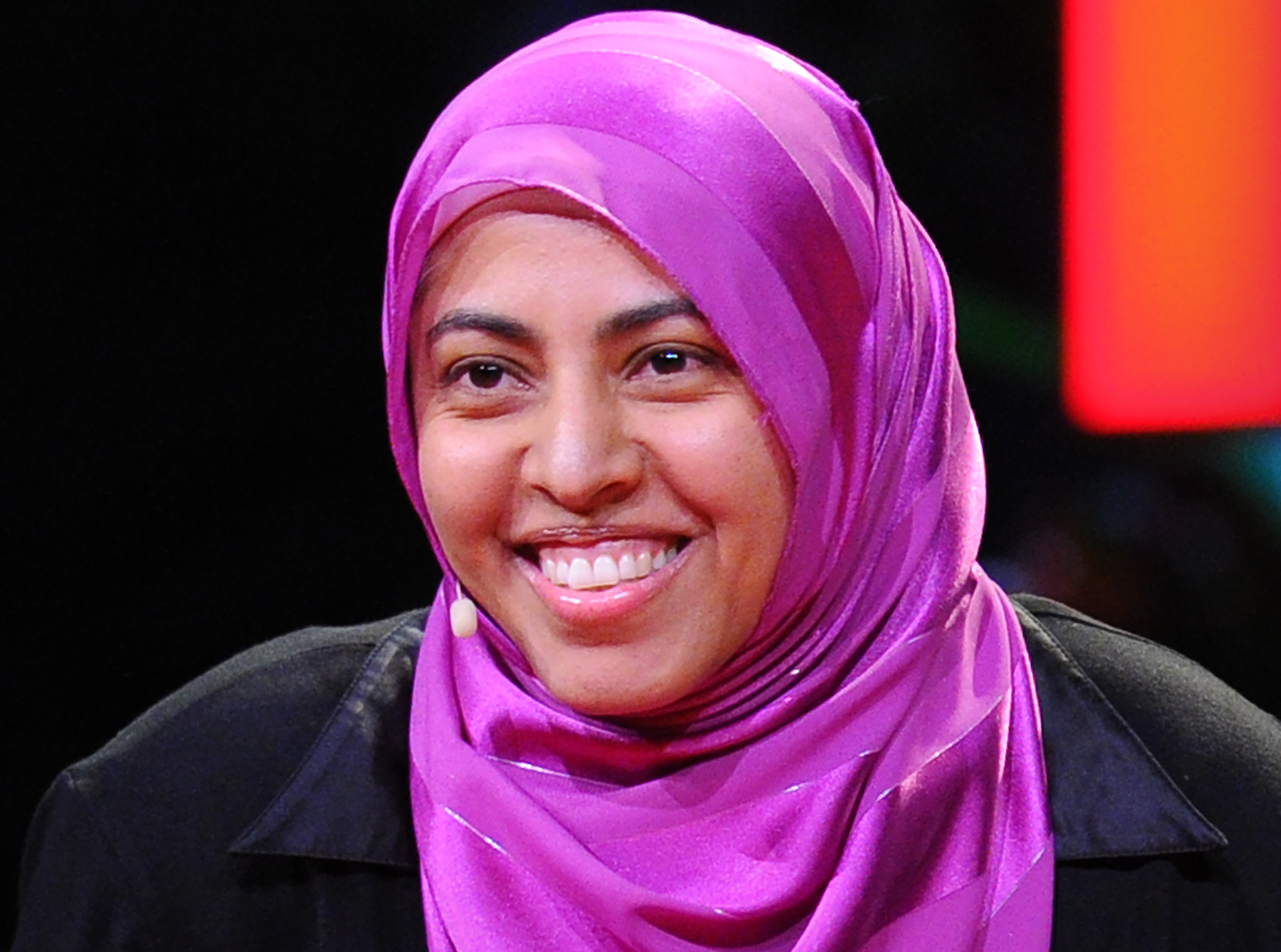
A woman in charge
In 2005 Walid’s sister Nadia took over the reins, becoming Yemen’s first woman editor and the third female employee of the Yemen Times — after the secretary and the office cleaner. She decided it was time to bring in new blood and embarked on a staff shakeup that met “much resistance” from inside the paper.
“Within one year I got rid of 50% of the staff — all older men,” she recalls. “I’m not being ageist but they didn’t want to change their ways.” They were hand-writing their stories on paper in Arabic, with the result that someone else had to do the translation and typing. She encouraged young women to join as trainee journalists — which often meant visiting their apprehensive
families to give reassurance. “I would tell them: ‘Your daughter is in safe hands, look I am a mum, a wife. I will take care of them’.” For many of them, the power balance in the family changed once they started earning money.
As more women joined the staff Nadia also sought to challenge stereotypes about the sort of stories male and female journalists were expected to write. She sent a female reporter to cover a story in a prison, while a male reporter was “almost in tears” when asked to write about contraceptives.
Under Nadia’s editorship the Yemen Times broke new ground with campaigns on issues affecting women’s rights — among them female genital mutilation (FGM). Describing FGM as a taboo subject, the paper commented: “Many people dare not speak about it, while some would rather forget it, claiming that it’s not a real problem in Yemen.” The article noted that 23% of Yemeni women had undergone FGM procedures, according to a study funded by USAID, and in some parts of the country the figure was as high as 69%.
Other social issues tackled by the Yemen Times included child marriage, “exchange” marriages, and the gender gap more generally. Under Yemeni law there was no minimum age for marriage and it was not uncommon, especially among poor families, for a girl to be married before puberty. Her family received a dowry — money that could then be used for one of the girl’s brothers to get married. One notorious case was that of Nujood Ali, a nine-year-old married to a man in his thirties, who fled after two months and eventually secured a divorce.
Another common practice was “exchange” marriage where two men from different families married each other’s sister. The benefit of this for poor families was that it removed the need for dowries to be paid. The brides involved often had little or no say in the matter and problems could arise if one of the marriages later broke down. The “exchange” agreement then became void and the other couple also had to divorce — even if they were happily married. One such dispute led to armed clashes between the two families which resulted in one member being killed.
Under Nadia’s editorship the paper’s focus on women’s rights was often greeted with hostility, especially over FGM. “I received so much hate mail at the time,” she said. A front-page article about Yemen having the lowest ranking in the World Economic Forum’s Global Gender Gap Index also brought complaints. “Usually the front page was about politics, security or men. People asked if the gender gap was an important story.”
Saleh losing support
By 2006 Saleh was facing another presidential election and this time the opposition parties joined forces to mount a more serious challenge. Their candidate — Faisal bin Shamlan, a southerner who had held ministerial posts in both the PDRY and unified Yemen — was heavily defeated but the result alarmed Saleh: his share of the vote had dropped from 96% in the previous election to 77%.
“It was considered one of the best ‘free’ elections Yemen has ever had,” Nadia said, though in her view the opposition made a strategic mistake. Local government elections took place at the same time as the presidential poll and the opposition put too much of its effort into the presidential contest and not enough into the local elections. “They could have had a landslide over the GPC [at the local level] but they thought this was the time for them to win top-down,” she said.
In 2011 the Arab Spring uprisings which had swiftly toppled the presidents of Tunisia and Egypt spread to Yemen with mass protests calling for Saleh to step down. Saleh clung on, with his own supporters holding rival demonstrations, and for a while, the Yemen Times avoided taking sides. “We had young, active, passionate journalists … and one of them wanted to be part of the protests,” Nadia said. “I told her we had to be independent and sent her to interview Saleh’s supporters on what they were doing. It gave her nightmares that she had to be respectful to people who were saying ‘Saleh is our king’, and things like that.”
The turning point came when unidentified snipers opened fire on anti-Saleh protesters while security forces looked on. Doctors reported 45 people shot dead and more than 350 injured — mostly with gunshot wounds. After that it became much more difficult to maintain an independent stance and relations with the authorities, in Nadia’s words, became “touch and go”. If they had something to say the paper would interview them, making clear that “I’m not against you, but facts are facts and you are doing this …”
The country’s unstable situation caused a sharp drop in advertising revenue and the Yemen Times was on the point of collapse when the Danish newspaper Politiken and its readers came to the rescue. “Politiken had a campaign where I would write a blog talking about what was going on in Yemen and they would ask readers for donations,” Nadia said. “The donations got us through the 2011 crisis. Had it not been for the Danish people Yemen Times would have stopped in 2011.”
Saleh had clung to power in the face of the protests but in 2012 he reluctantly resigned under international pressure and his deputy, Abdu Rabbu Mansour Hadi, became president in an “election” where he was the only candidate. Although this was unconstitutional, the expectation was that Hadi would serve only for a two-year “transitional period”. In the meantime there would be a National Dialogue Conference which — it was hoped — would develop a consensus on the way forward.
Talks with the Houthi leader
Nadia was surprised to receive a call from Hadi asking her to join the contact group that would prepare for the conference. Apart from Nadia, the seven other members were all big names in Yemeni politics — among them former prime minister Abd al-Karim al-Iryani and the Socialist party leader, Yassin Said Nu’man. “We had an amazing role,” she said. “Our responsibility was to call different factions to come together and start having a dialogue.”
By that stage the rebel Houthi movement was emerging as a major political force and Nadia was assigned the task of cajoling them into joining the dialogue. The Houthis — so called after the most prominent family in their movement — belong to the Zaidi sect, a branch of Shia Islam found mostly in Yemen which is thought to account for 35%-40% of the country’s population.
Officially known as Ansar Allah (“The Supporters of God”), the Houthis were based mainly in Saada province in the far north of the country, adjacent to the Saudi border. Although Yemen had once been ruled by Zaidi imams and President Saleh was also a Zaidi, the Zaidis of the Saada area had become a marginalised group. Left largely to their own devices, they had become extremely self-reliant, organising their own affairs and constructing much of the rudimentary local infrastructure themselves in the absence of government help. In addition to that, they felt their religious traditions were threatened by Saudi influence as increasing numbers of men converted from Zaidism to the salafi or Wahhabi version of Sunni Islam. The Houthis were well armed and between 2004 and 2010 had fought a series of intermittent wars against Saleh’s regime.
In her dialogue role Nadia met the movement’s leader, Abd al-Malik al-Houthi, flying to his stronghold in the far north, accompanied on a small plane by Abd al-Wahab al-Anisi, secretary general of Islah, Yemen’s equivalent of the Muslim Brotherhood. When they arrived the Houthis confiscated their phones but allowed Nadia to keep the laptop she used for taking notes.
It proved an interesting experience for Nadia, not least because she was seven months pregnant at the time: “There was this mix of ‘What!!! It’s strange, you can’t be here,’ and much attention and support.” The meeting took place in traditional fashion, squatting on the floor, but they gave Nadia a cushion to sit on and when lunch came they were urging her: “Eat more, eat more, you’re pregnant.”
Although Islah and the Houthis were foes, with major religious differences, Nadia was struck by how similar they seemed: “The ideology was dominating their perspective, it was like talking to two sides of the same coin.” Both sides were willing to sign up to a dialogue but the Houthis objected to simply calling it a dialogue “towards peace” because they wanted it to acknowledge their grievances. Islah, on the other hand, feared mentioning Houthi grievances would imply liability. Searching for a way around the problem, Nadia suggested rewording the statement to talk of a “just” peace — which both sides accepted.
The National Dialogue Conference ran for ten months, starting in March 2013, and Nadia became the only woman on its nine-member presidium. “That was a really good time for the Yemen Times,” she said. It was the place to go to if you wanted to know what was happening politically. I had scoops one after another — whatever I could manage to publish ethically — because I was in the room when everything was going on.”
Nadia’s role at the conference brought further contact with the Houthi leader: “Abd al-Malik was so polite, he didn’t look like a bully. He presented himself as calm, interested … in fact he would sometimes say ‘And what do you think, Miss Nadia?’ — that kind of thing. He was so amicable. He would be calm and collected and a peacemaker but he had two men at his side playing a different role, banging on the table and saying no.”
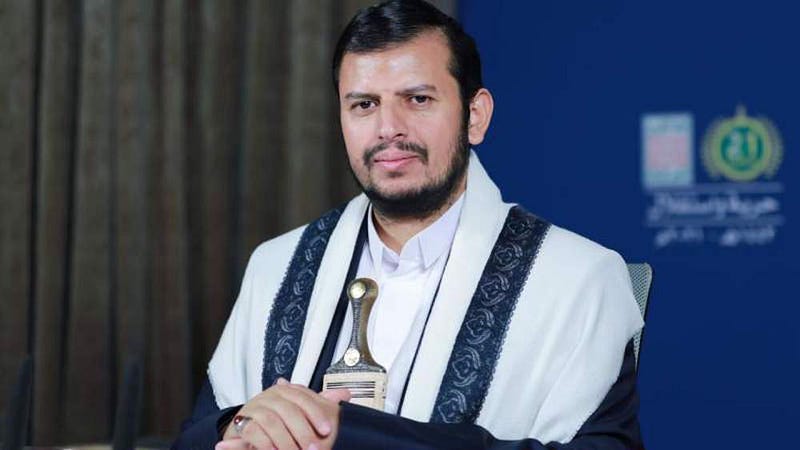
Houthis seize power in Sana’a
In November 2014 Hadi appointed Nadia as Yemen’s first female information minister in what was intended to be a technocratic government. At that point she recused herself from the Yemen Times and brought in a temporary editor.
Disputes continued after the dialogue conference and Houthi fighters — who by then had ex-president Salih’s support, made territorial gains in the north, eventually reaching the capital, Sana’a, and setting up checkpoints there. “The government’s forces were stationed at different points within Sana’a and the Houthis stationed their own,” Nadia recalled. “You would have a checkpoint for Hadi and, a few metres away, a Houthi checkpoint.”
Nadia warned Hadi that the TV and radio stations were unprotected and would be the first to fall in the event of a coup. As a government minister, she also asked for protection herself but the defence minister said he was powerless to help, telling her: “If I told you I could move one soldier from point A to point B, I would be lying to you.”
On the morning when the coup happened the Houthis took over the government news agency together with state-owned boadcasters. Nadia recalled: “The managers phoned me to say ‘They’re here with their guns, what do we do?’ I said it’s not your battle — just leave. Go home, safety is the priority.”
Since the Houthis’ initial focus was on seizing control of the government media and other state institutions, the Yemen Times was able to continue publishing for a while, though it faced constant harassment and some issues failed to appear. “I was harassed personally and the paper was harassed,” Nadia said. “I was threatened, I was chased. It was verbal face to face, it was by text, it was online … and the journalists themselves were scared.” By the spring of 2015 it became impossible to carry on. The Yemen Times closed and Nadia left the country. "I had to flee on the last chartered flight by the UN with its international staff. I had help from them and had it not been for CNN journalist Nick Paton Walsh and the head of UNDP, Paolo Lembo, I might not have survived. I fled under disguise, it was horrifying."
End of the road
The Houthis consolidated their power in the north while Hadi’s internationally recognised government retreated to the southern city of Aden, and later to Saudi Arabia. A coalition of mainly Saudi and Emirati forces began military action against the Houthis and years of war followed.
Twenty-five years after north-south unification Yemen once again became a divided country with two rival governments. Politically, the country had come full circle, and the life and death of the Yemen Times marked the beginning and apparent end of its democratic experiment.
“We stood until the very last minute,” Nadia said. “We were the voice of truth and independence to the rest of the world, in English. We conveyed things in a different perspective — for example, women and marginalised communities.”
Although the Yemen Times no longer exists its content can still be read — the Saqqaf family have compiled an online archive. The radio station survives under different management and with a different editorial perspective.
Meanwhile, the paper’s former staff are now dispersed, mostly in other countries, but Nadia is especially proud of the skills they acquired. “The Yemen Times was like a school,” said. “It was an educational institution. Most of the people we trained became correspondents of international media. It’s a badge of honour. If you talk now to any of the former staff they would say how proud and how significant they felt developing journalism in Yemen and in representing the underdogs. We were there on a mission, we had to give voice to those who could not.
“The generation who were budding journalists are now in significant positions of power, not politically, but across different domains. Some of them are in the business sector. These are our alumni that could create a change if the situation permits.”
For now, though, other countries are getting the benefit of the skills they acquired in Yemen. “This is not the time for heroes,” Nadia said. “They are human beings, they have families. I’d rather have them safe and thriving. The other thing is they are creating change regarding Yemen. This is a time to keep a low profile but stay connected. When the time comes we’ll all rise.”
***
FURTHER READING:
Raidan AlSaqqaf's book, "Abdulaziz: Making Yemen a Good World Citizen", is available from Amazon. An Arabic version is available here and here.
An online archive of the Yemen Times can be found at www.yementimes.com.

 RSS Feed
RSS Feed
